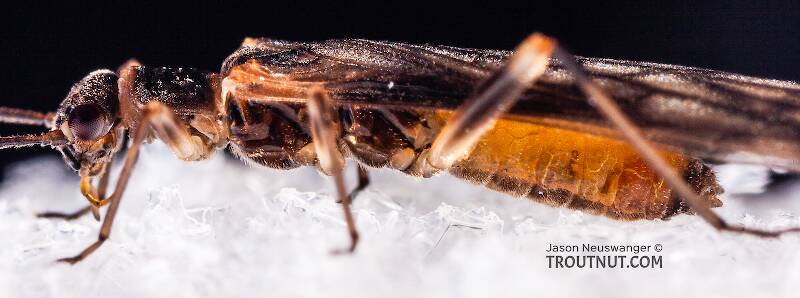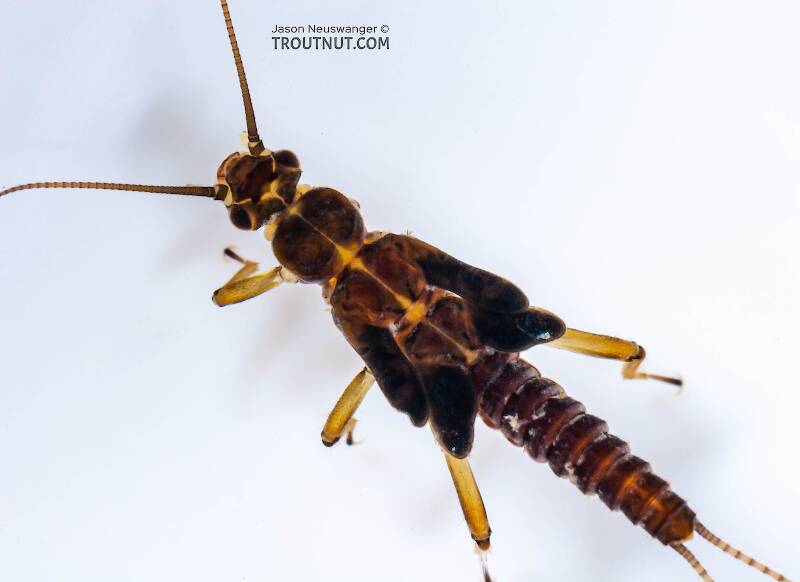
Hex Mayflies
Hexagenia limbata
The famous nocturnal Hex hatch of the Midwest (and a few other lucky locations) stirs to the surface mythically large brown trout that only touch streamers for the rest of the year.
Featured on the forum

This is the first of it's family I've seen, collected from a tiny, fishless stream in the Cascades. The three species of this genus all live in the Northwest and are predators that primarily eat stonefly nymphs Merritt R.W., Cummins, K.W., and Berg, M.B. (2019).

Troutnut is a project started in 2003 by salmonid ecologist Jason "Troutnut" Neuswanger to help anglers and
fly tyers unabashedly embrace the entomological side of the sport. Learn more about Troutnut or
support the project for an enhanced experience here.
Forestflies
This common name refers to only one family. Click its scientific name to learn more.
Stonefly Family Nemouridae
These are often called Forestflies.

A few of these tiny stoneflies were among the only species of aquatic insect adults in the air on this particular afternoon, with most of the action coming from a species of Epeorus mayfly. I somehow forgot to photograph this one on the usual ruler, but I recall it was very, very small, with an abdomen no more than 1mm in girth and the body, not counting the wings, probably just 5-7mm long.
See 5 more specimens...
References
- Merritt R.W., Cummins, K.W., and Berg, M.B. 2019. An Introduction to the Aquatic Insects of North America (Fifth Edition). Kendall/Hunt Publishing Company.


